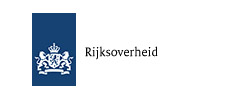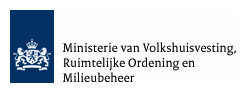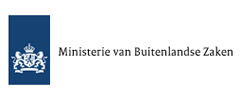"Spoilsports! Let's get rid of toxic toys!" WECF campaign for toxic-free toys
Proposed revision of the European toys legislation continues to allow carcinogens and hormone disrupting substances in toys, WECF organises international press actions
11.12.2008 |WECF

Picture published in commuter newspaper Metro on November 28, 2008
The French newspaper "le Monde", the first TV station in Germany "ARD" and also "Bayerischer Rundfunk", the commuter papers "METRO" in both the Netherlands and France, the Dutch newspaper "TROUW", and the national evening news television channel "France 3", are a few among those media that dedicated space to the actions by WECF in Munich, Utrecht, Paris and Annemasse on to the lack of good legislation to protect children from hazardous chemicals in toys.
WECF is a network of 100 women , environment and health organisation working on improving environmental health in 40 countries. WECF membersare concerned about the increasing health problems of children linked to hazardous chemicals in day to day products such as toys. Recent research shows a strong reduction in reproductive health, which might be linked to exposure to hormone disrupting chemicals such as pthalates. Brominate Flamertardants, which are extremely persistent, have been increasing at high rates in blood-levels of youth in Europe.

Studies in France show that Formaldahyde, which can cause cancer, is a great problem in indoor air pollution in homes.WECF believes that toys , which are not essential to survival and therefore should not contain any substances that are suspected of creating cancer, or can be mutagenic or toxic to reproduction. The current proposal on which the European Parliament will vote next week, would still allow these substances in toys, at levels which scientists say can not be proven safe. Endocrine disrupting chemicals are not at all addressed in the proposed legislation. Nor are neuro-toxic chemicals (suspected to create braindamage) or immunotoxic chemicals. Furthermore, the European toys directive does not impose any mandatory control of toys. The current CE marking is based on voluntary effortsof industry, and as many of the recent toys scandals have shown, does not protect children.
WECF has
launched an on-line signature campaign for a stronger toys safety
legislation and has received hundreds of messages for the European
Policy makers, which we will present on January 7th 2009 before the vote
in the European Parliament. Please sign on to the campaign on the WECF
website
WECF invited also medical experts who advised on preventative action which parents could take. Unfortunately, parents have no information about the types of hazardous chemicals in the toys which their children received. Some experts suggested not to keep toys in the same room as where the children sleep, others to let the toys remain outside on a balcony for at least a week, or longer, to allow some of the dangerous substances to leach out of the toys. Others recommended to avoid electronic toys of unknown brands which do not have a policy to substitute dangerous chemicals. And it was also recommended to prefer hard-plastic over soft-plastic, to avoid phthalates. Many dolls which have been tested by consumer organisations such as the German Öko-institute have found to contain phthalates. Furthermore, it was suggested not to buy toys made of ply-wood, but only of solid wood, as the glues used for many wooden puzzles, for example, emit formaldahyde. For the WECF position paper, the letters to the ministers of health and environment, the letters to parliamentarians, and the copies of the press coverage, and television emissions, please see the WECF website or contact: Alexandra Caterbow at alexandra.caterbow@wecf.eu.
WECF member organisations who would like to organise similar actions in their countries, please contact also Alexandra Caterbow .
Christmas Scandal! If toys harm our children, why does the EU still allow hazardous substances to be used in them?
Munich/Utrecht, November 28 - WECF draws attention to the irresponsibility of politicians with its action "Toxic toys – parents have no choice" and urges a radical revision of the European Toys Safety directive. The action " Toxic toys – parents have no choice“ on the main square of Munich – the Marienplatz, was realised mid November by the environment and health organization WECF - Women in Europe for a Common Future. It demonstrated that many toys contain harmful substances. The second action took place in Utrecht, at the Town Hall Bridge amidst Saint Nicholas shoppers.
Wolfgang Döring, an expert from the German label "spielgut" tested toys in Munich, which were brought by worried mothers and fathers. When giving their children presents such as toys, parents not only hand over joy but also often - without knowing it, a whole package of hazardous substances, e.g. substances which are mutagenic, and of which research has shown it can be linked to cancer, damage to the brain, asthma and allergies, and also damage to the endocrine system.

In December the European Parliament will finally get the chance to ban harmful substances from toys for all time by revising the European Toys Safety Directive. But unfortunately WECF worries that the European Parliament will not seize this chance. The draft directive includes a general ban of heavy metals like lead, arsenic and cadmium from toys. But other dangerous substances, which can accumulate in the body, can damage the brain and the endocrine system, and are particularly toxic or persistent (and vPvB PBT), are not mentioned at all in the directive. Carcinogenic and mutagenic and reprotoxic chemicals (CMR’s) and allergenic fragrances in toys are not generally prohibited. The proposal falls short of technically feasible possibilities and existing regulations on CMR substances in other areas, such as cosmetics.
Substances classified as CMR substances should be allowed only if proven safe by a recognised scientific body and only if no substitute exists and they are not covered by the REACH regulation. WECF calls for a general ban on hazardous substances in toys, because babies and children are particularly vulnerable. Their bodies and systems are still developing. So exposure at this early age could give lifelong ill health effects. Concerned parents in Germany can currently only choose from a few toys labelled by “spielgut“, read test magazines (like Stiftung Warentest and Ökotest)or trust their own senses. If its smells or feels bad then its probably something which shouldn’t be put in your childs arms.
Sonja Haider, the coordinator of WECF´s chemicals group, therefore urges: "harmful substances in toys are a scandal. CMR, PBT and vPvB chemicals and allergenic fragrances and sensitiser’s must be generally prohibited without exceptions. Toys should be fun and not a hazard."
Related News
Meet the Winners of the Gender Just Climate Solutions Award at COP24
On the 70th anniversary of the Universal Declaration of Human Rights, we awarded Gender Just Climate Solutions Winners at the climate negotiations in Katowice, Poland
11.12.2018
Invitation: Gender Just Climate Solutions Award 2018
10 December, COP24 Katowice
04.12.2018
Getting to the Future We Want
4-7 November, Brussels: European Environmental Bureau’s (EEB) Annual Conference
12.11.2018
GoodFood4All
WECF and partners all over Europe start GoodFood4All Campaign
06.11.2018
#Ruralwomen: join our Women2030 campaign!
15.10.2018






































